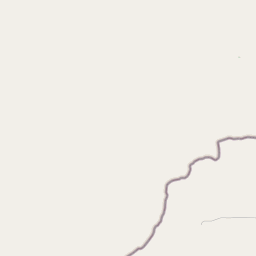Site of the 1759 Taovayo Victory Over Spain
Historical marker location:






Col. Diego Ortiz Parilla, a commandant of Presidio San Saba (near the later site of Menard) had grave Indian problems in 1759. Priests and others were killed in Comanche attacks on Mission San Saba. Comanches and their friends were allied to Frenchmen, who were trading deep in Spanish domain. Parilla wished to whip the Comanches and expel the French. With 380 soldiers and Indian support to a total of 600 men, he left San Antonio in August. A victory over some Tonkawas on the Brazos as he marched north gave him false confidence. When he arrived at this site in October, he saw Red River forming a moat around a fort. His Apaches tried in vain to span the river and invade the fortified Taovaya village. He saw 14 or more Frenchmen; a French flag was flying. Indians played drum and fife and had plenty of guns and ammunition. He bombarded the fort with cannons, but after losing 52 men in a 4-hour battle he was glad that nightfall gave him a chance to withdraw. He was pursued for many days as he retreated to Presidio San Saba, which he reached on Oct. 25, 1759. The Taovaya Indians were later known as Wichitas, and continued to resist white men until the 1870s.
(1976)
As one of the most visible programs of the Texas Historical Commission (THC), historical markers commemorate diverse topics in Texas history, including: the history and architecture of houses, commercial and public buildings, religious congregations, and military sites; events that changed the course of local and state history; and individuals who have made lasting contributions to the state, community organizations, and businesses.
The state of Texas was once an independent country known as the Republic of Texas. It gained independence from Mexico in 1836 and was a separate nation until it was annexed by the United States in 1845.
The county's namesake, Daniel Montague, arrived in the area in 1854 and became one of the first permanent settlers. Montague County was officially established and organized in 1858, with Montague serving as its first county seat. However, due to ongoing conflicts with Native American tribes and accessibility issues, many of the early settlements faced challenges in their development.
The discovery of oil and gas reserves in Montague County in the early 1900s brought significant economic development to the region. This led to an increase in population and infrastructure, and the county experienced a boom in oil production during the mid-20th century. The county's economy diversified over time to include agriculture, manufacturing, and tourism, contributing to its growth and stability.
Today, Montague County is known for its picturesque scenery, with rolling hills, vast prairies, and scenic rivers attracting outdoor enthusiasts and nature lovers. The county also celebrates its history through its various museums, historical landmarks, and annual events, preserving the heritage and culture of the area for future generations to appreciate.
Montague County Timeline
This timeline provides a glimpse into the major events and milestones that have shaped the history of Montague County, Texas.
- 1857: Montague County is established by the Texas legislature
- 1860: The first county courthouse is built in the town of Montague
- 1861-1865: Montague County residents serve in the Confederate Army during the Civil War
- 1874: The town of Saint Jo is founded
- 1882: The Fort Worth and Denver City Railway extends into Montague County, promoting economic growth
- 1884: The town of Nocona is established
- 1900: The Montague County courthouse burns down and is subsequently rebuilt
- 1930s: The Great Depression and Dust Bowl impact the county, causing economic hardship
- 1957: The Montague County Courthouse is again destroyed by fire but is reconstructed
- 2000: The county experiences population growth and ongoing development